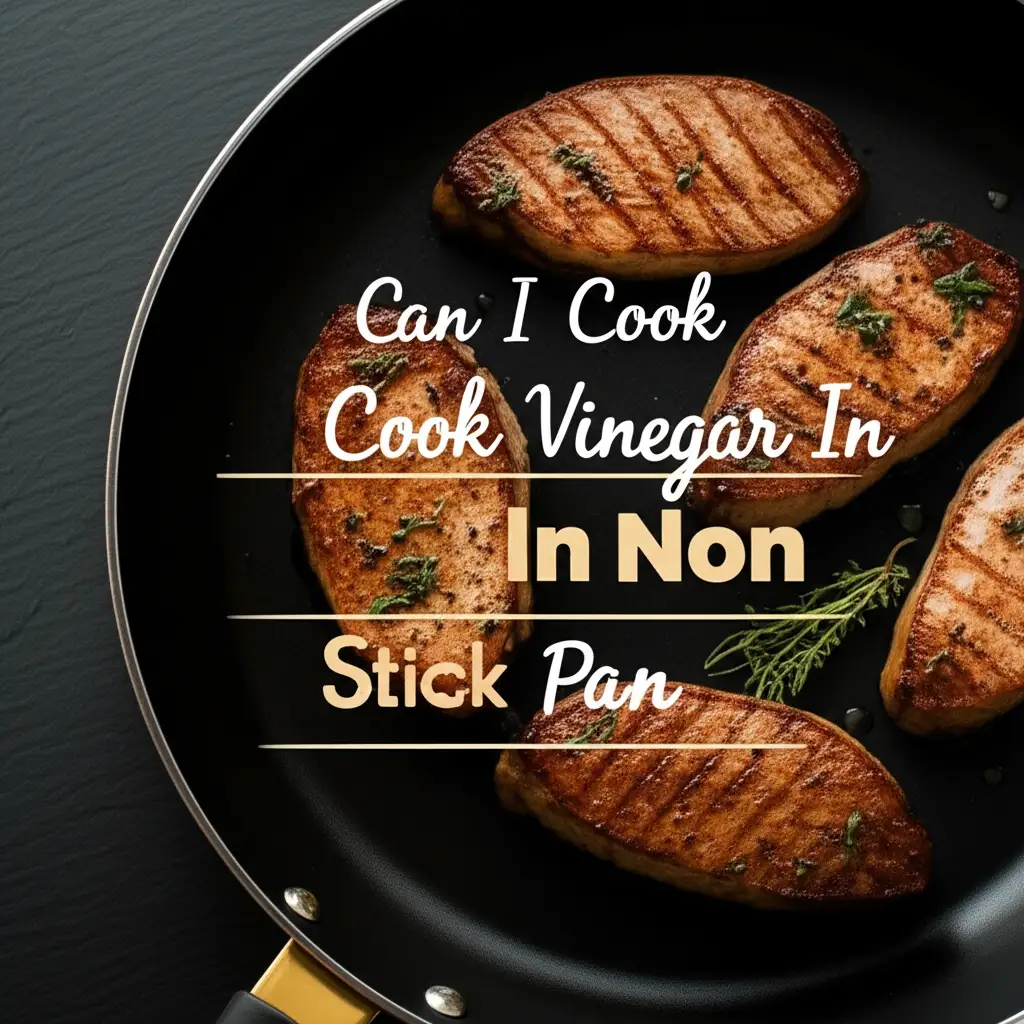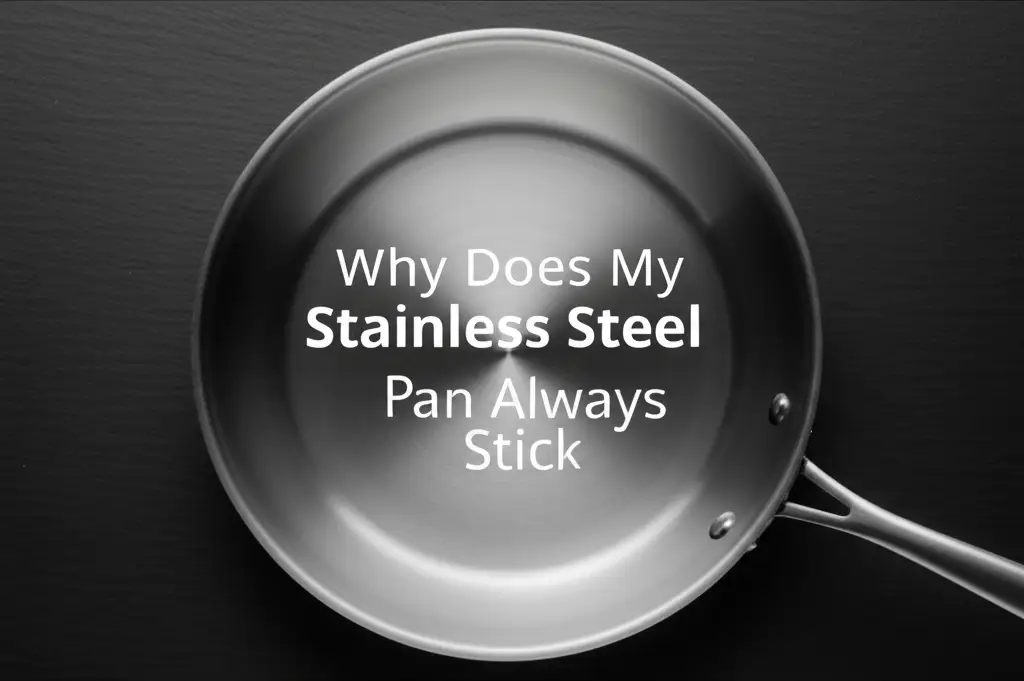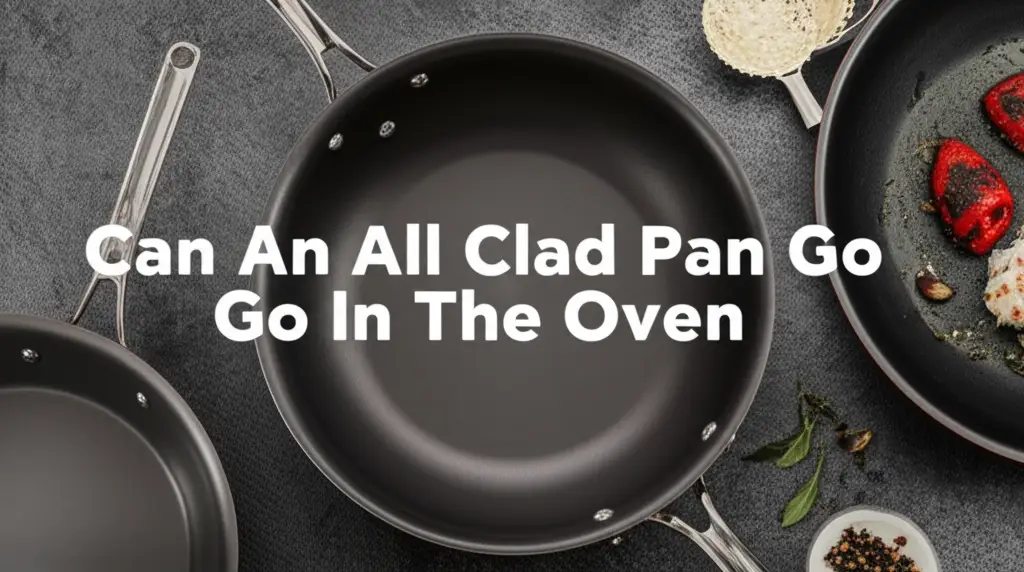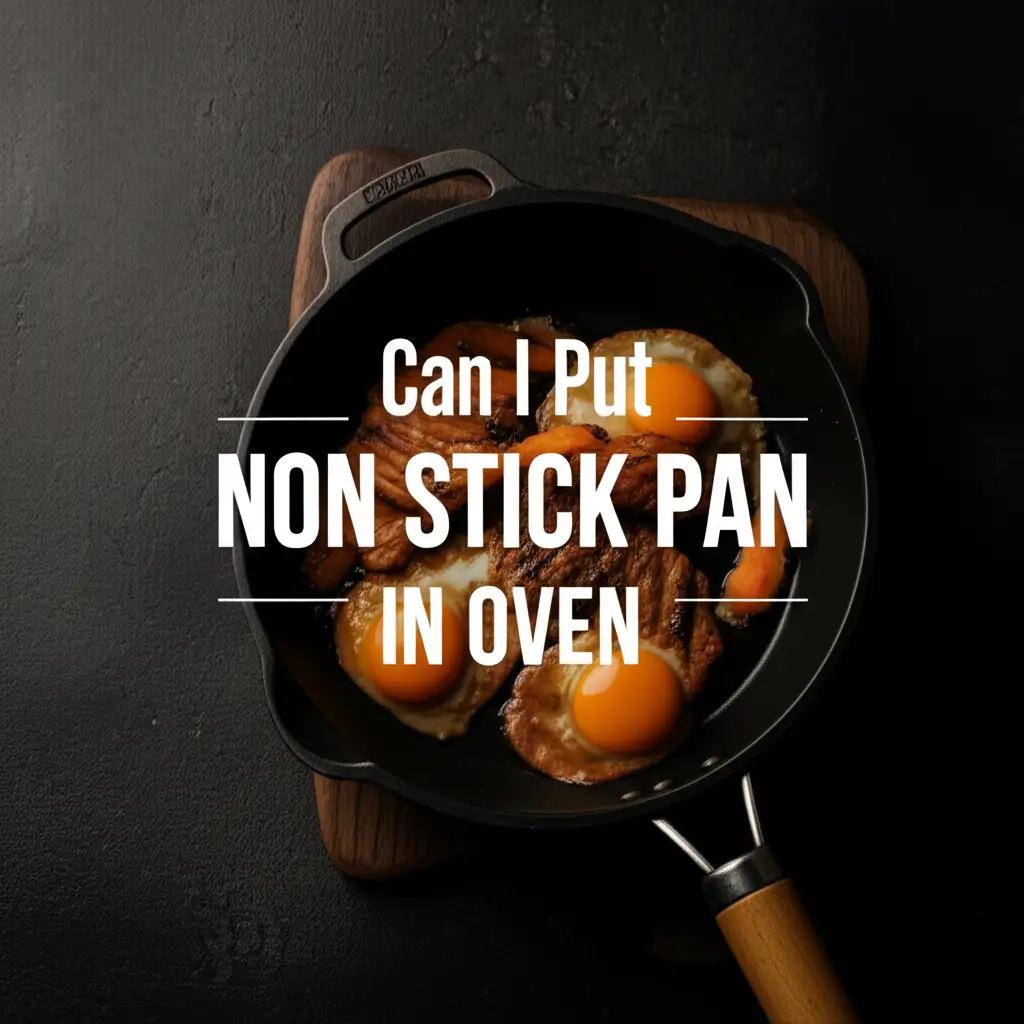· Katria Melrose · Kitchenware · 16 min read
Can My Copper Pan Go In The Oven
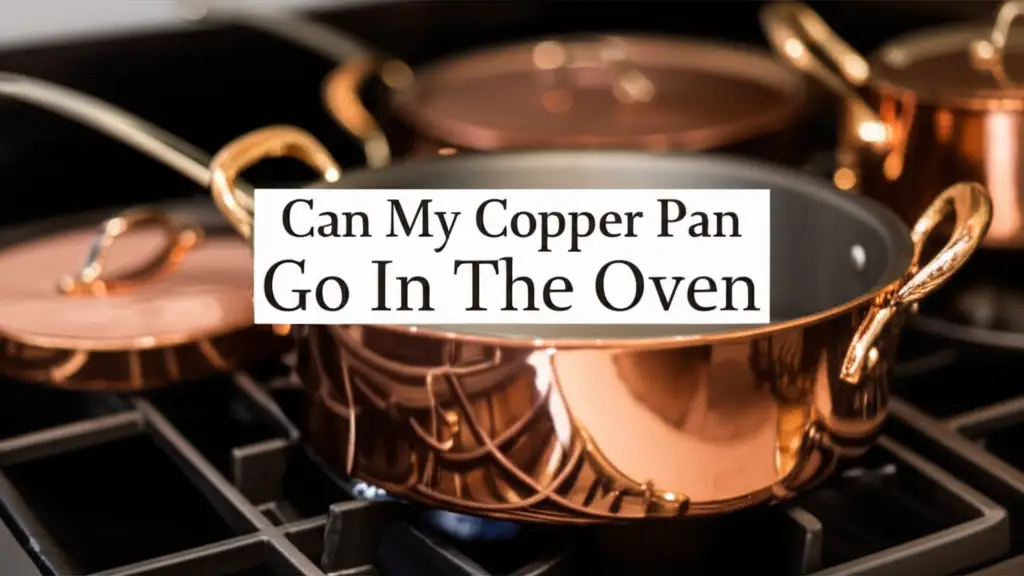
Can Your Copper Pan Safely Go in the Oven?
Are you wondering, “Can my copper pan go in the oven?” You are not alone. This is a common question for home cooks. Copper cookware looks beautiful and cooks efficiently. However, its suitability for oven use depends on several factors. This guide explores those factors. We will help you understand if your specific copper pan is oven-safe. We will also cover proper oven use and care for your valuable copper pieces.
Takeaway
Before placing your copper pan in the oven, check these points:
- Lining Material: Stainless steel or tin linings are common. Ensure tin linings are not exposed to temperatures above 450°F (232°C).
- Handle Material: Handles must be oven-safe. Metal handles like brass, bronze, or stainless steel are usually fine. Plastic or wooden handles are not.
- Non-Stick Coating: If present, ensure the coating is oven-safe and note its maximum temperature.
- Manufacturer’s Instructions: Always check your pan’s specific guidelines or markings.
Can my copper pan go in the oven?
Yes, many copper pans can go in the oven, but it depends on the pan’s construction. The lining material, handle type, and any non-stick coatings determine if your specific copper pan is oven-safe and at what maximum temperature it can be used. Always check the manufacturer’s instructions.
Understanding Your Copper Pan’s Construction
Copper pans are beautiful and efficient. They conduct heat very well. But pure copper is not used for cooking surfaces. Acidic foods can react with copper. This makes the food taste metallic and can be harmful. For this reason, most copper pans have a lining. This lining determines much of its oven safety.
Types of Copper Pan Linings
The material inside your copper pan is critical. It protects food from direct copper contact. It also affects how the pan performs in the oven.
- Tin-Lined Copper Pans: These pans have a thin layer of tin on the cooking surface. Tin has a low melting point. It starts to soften around 450°F (232°C). If you put a tin-lined pan in a hot oven, the tin can blister or melt. This ruins the lining and exposes the copper. Tin-lined pans are best for stovetop cooking or low-temperature oven use.
- Stainless Steel Lined Copper Pans: Many modern copper pans feature a stainless steel interior. Stainless steel is very durable. It can withstand high oven temperatures. It does not react with food. Stainless steel-lined copper pans are generally oven-safe. They can go up to 500°F (260°C) or higher. Always check the manufacturer’s limit.
- Non-Stick Coated Copper Pans: Some copper pans have a non-stick coating. This coating usually covers the entire interior. These coatings have specific temperature limits. Exceeding these limits can damage the coating. It can also release harmful fumes. Check the pan’s instructions for its maximum oven temperature.
Oven-Safe Components: Handles, Lids, and Coatings
A pan is only as oven-safe as its least durable part. Even if the pan body is fine, other components matter. Handles, lids, and special coatings all have their own temperature limits. You must consider them all before putting your copper pan in the oven.
Examining Your Pan’s Handles
Handles are often the weakest link for oven use. Different materials react differently to high heat.
- Metal Handles: Handles made from brass, bronze, cast iron, or stainless steel are generally oven-safe. These materials can withstand high temperatures. You might need an oven mitt to handle them after use. They get very hot.
- Wooden Handles: Wooden handles are never oven-safe. Wood can char, crack, or even catch fire in the oven. Always avoid putting pans with wooden handles in the oven.
- Plastic or Bakelite Handles: Many plastic or synthetic handles melt at lower temperatures. They can deform or release unpleasant odors. Check if the manufacturer specifies “oven-safe” for these handles. Even then, they usually have a much lower temperature limit. For example, some might only be safe up to 350°F (175°C).
Considering Your Pan’s Lids
Lids also need attention. Many lids combine different materials.
- Glass Lids: Glass lids often have plastic or metal knobs. The glass itself is usually tempered. This makes it oven-safe up to a certain temperature. However, the knob material might not be. Can Red Copper Pan Lids Go In The Oven explores this in detail. If the knob is plastic, remove the lid before oven use.
- Metal Lids: Lids made entirely of metal (e.g., stainless steel, copper) are generally oven-safe. Ensure any handles or knobs on these lids are also metal.
- Silicone Components: Some lids or handles might have silicone accents. Silicone is oven-safe to a point. Check its specific heat resistance.
Protecting Non-Stick Coatings
If your copper pan has a non-stick coating, follow its rules carefully. Most non-stick surfaces are designed for stovetop use. They may not tolerate high oven heat.
- Temperature Limits: Non-stick coatings often degrade above 400-450°F (200-232°C). This can cause the coating to flake. It can also release fumes.
- Manufacturer’s Advice: This is crucial. Your pan’s instructions will state its maximum oven temperature. Stick to this limit strictly. This ensures the longevity of your pan.
Temperature Limits for Copper Pans
Knowing the right temperature limits is key. Different types of copper pans have different tolerances. Putting a pan into an oven that is too hot can cause irreversible damage. It can also compromise its cooking performance.
General Guidelines for Oven Temperatures
Always remember that these are general guidelines. Your specific pan might have different limits.
- Tin-Lined Copper Pans: Limit oven use to no more than 350°F (175°C). Some experts even suggest lower, around 300°F (150°C), or no oven use at all. The tin lining can melt or blister at higher temperatures. This exposes the reactive copper underneath.
- Stainless Steel Lined Copper Pans: These pans are much more robust. They can typically handle oven temperatures up to 500°F (260°C). Always verify the manufacturer’s maximum temperature. Some high-quality pans might tolerate higher temperatures briefly.
- Non-Stick Coated Copper Pans: Oven limits for these vary widely. They can range from 350°F (175°C) to 450°F (232°C). The non-stick coating, not the copper itself, dictates this limit. Exceeding this causes coating breakdown.
Understanding Heat Distribution
Copper is an excellent heat conductor. This means your copper pan will heat up very quickly and evenly in the oven. This is a benefit for cooking. However, it also means any heat-sensitive components will reach their critical temperature fast. Be mindful of this rapid heat transfer. Even a short exposure to excessive heat can cause damage.
The Role of Induction Compatibility
Some modern copper pans have an induction-compatible base. This usually means there’s a layer of magnetic material, like stainless steel. This base does not typically affect oven safety limits. The pan’s lining and handle materials are still the main factors for oven use.
Testing Your Copper Pan for Oven Readiness
Before placing your cherished copper pan in the oven, you need to be sure. There are clear steps to identify if your pan is oven-safe. This prevents damage and ensures safety. A quick check can save your cookware.
Look for Manufacturer Markings
The most reliable source of information is the pan itself. Manufacturers often stamp or engrave crucial details on their cookware.
- Bottom of the Pan: Turn your pan over. Look for symbols or text on the base. Many oven-safe pans have a small oven symbol. It may also list a maximum temperature in degrees Fahrenheit or Celsius.
- Handle or Rivets: Sometimes, markings are on the handle or near the rivets. Check these areas carefully.
- Instruction Manual: If you still have the original manual, consult it. It provides the most comprehensive care and use instructions. This includes specific oven temperature limits.
Identify Pan Materials
If no markings are present, you must identify the materials yourself. This knowledge helps you make an educated guess about oven safety.
- Lining Check:
- Shiny Silver: If the interior is very shiny and silver, it is likely stainless steel. Stainless steel is generally safe for high oven temperatures.
- Dull Gray/Yellowish: If the interior is dull, somewhat soft, and possibly yellowish, it is probably tin. Tin has a low melting point. Limit oven use for these pans.
- Dark/Smooth: A dark, very smooth, often slick surface indicates a non-stick coating. These coatings have specific temperature limits.
- Handle Check:
- Metallic: Brass, bronze, cast iron, or stainless steel handles are oven-friendly.
- Wood: If the handle is wood, the pan is not oven-safe.
- Plastic/Synthetic: These usually have lower temperature limits. If you cannot confirm its oven-safe rating, do not risk it.
When in Doubt, Don’t
If you cannot find any clear markings or identify the materials with certainty, err on the side of caution. Do not put the pan in the oven. It is better to use it only on the stovetop. This protects your pan from potential damage. It also prevents any safety risks. You can often find similar information online if you know the brand and model number. Can I Put My Copper Pan In The Oven offers more insights into this decision-making process.
Best Practices for Using Copper Pans in the Oven
Once you confirm your copper pan is oven-safe, using it correctly is next. Proper usage helps maintain its beauty and performance. It also ensures safety. Follow these best practices for optimal results.
Gradual Temperature Changes
Avoid sudden, extreme temperature shifts. Copper conducts heat very well. This means it responds quickly to temperature changes.
- Preheat Slowly: Do not put a cold copper pan directly into a very hot oven. Preheat the oven with the pan inside, or allow the pan to warm slightly before placing it in a preheated oven. This minimizes thermal shock. Thermal shock can potentially warp the pan or damage its lining.
- Cool Down Slowly: After removing the pan from the oven, place it on a heat-resistant surface. Allow it to cool naturally. Do not plunge a hot pan into cold water. This can cause warping or cracking, especially for older or thinner pans.
Protect the Exterior Finish
Copper’s beauty lies in its shiny, reddish-gold appearance. Oven heat can affect this finish.
- Discoloration: High oven temperatures can cause the exterior copper to oxidize. This leads to a darker, duller patina or even black spots. This is usually harmless to the pan’s function but changes its look. You can often restore the shine with proper how to clean tarnished copper methods.
- Protective Coatings: Some decorative copper pans have a lacquer coating. This coating protects the shine. Lacquer will burn off in the oven. Remove such coatings before oven use if you intend to cook with the pan regularly.
Use Oven Mitts Always
This might seem obvious, but it is worth stating. Metal handles on copper pans get extremely hot in the oven.
- Safety First: Always use thick, heat-resistant oven mitts when handling a hot copper pan. Even a brief touch can cause severe burns.
- Handle Wraps: For stovetop use, some people use silicone handle wraps. These are not typically oven-safe. Remove them before placing the pan in the oven.
Choose the Right Cooking Methods
Copper pans are versatile. They excel at many cooking tasks.
- Baking and Roasting: They are excellent for casseroles, gratins, and roasted vegetables. Their even heat distribution promotes consistent cooking.
- Finishing Dishes: Use them to transfer stovetop dishes to the oven for finishing. This works well for meats that need a sear and then a bake.
By following these practices, your copper pan will perform well in the oven. It will also remain a cherished part of your kitchen for years.
Potential Risks and How to Avoid Them
Using a copper pan in the oven carries specific risks. Understanding these risks helps you avoid them. Proper care ensures your pan remains functional and safe. Do not let potential issues deter you. Awareness is key.
Risks Associated with Unsuitable Materials
Putting the wrong pan in the oven causes problems. The materials determine the risk.
- Melting Handles: Plastic, bakelite, or wooden handles will melt or burn. This damages the pan and creates smoke. It also poses a fire hazard. Always ensure handles are oven-safe metal.
- Damaged Linings: Tin linings are particularly vulnerable. High heat melts them, creating blisters or exposing bare copper. This renders the pan unsafe for food contact. Stainless steel linings are much more durable.
- Coating Degradation: Non-stick coatings can break down at high temperatures. They may flake into food. They can also release harmful fumes. Stick to the manufacturer’s stated temperature limits for these pans.
Risks Associated with High Temperatures
Even with oven-safe components, extreme heat can be problematic. Copper itself is generally stable at high temperatures. However, its interactions with other materials matter.
- Discoloration of Copper: The exterior copper can oxidize and darken. This is a natural process. It forms a protective patina. However, some people prefer the bright copper look. You can clean this with appropriate copper cleaners.
- Warping: Rapid temperature changes can cause warping. This happens more often with thinner copper pans. Gradual heating and cooling prevent this.
- Fumes: If plastic or non-stick coatings are overheated, they can release fumes. Ensure proper ventilation. Avoid exceeding temperature limits for coated pans.
Cleaning After Oven Use
Proper cleaning is essential after oven use. This helps maintain the pan’s condition. How to clean burnt copper pan covers specific situations.
- Cool Completely: Allow the pan to cool before cleaning. Thermal shock during cleaning can damage the pan.
- Gentle Cleaning: Use mild soap and water for the interior. Avoid abrasive scrubbers on linings, especially non-stick ones.
- Exterior Shine: For the copper exterior, use a copper cleaner or natural solutions like lemon and salt. This removes tarnish and restores shine. Be gentle to avoid scratches. For advice on exterior cleaning, check out how to clean copper bottom pans.
By understanding and avoiding these risks, you extend the life of your copper pan. You also ensure safe cooking every time.
Maintaining Your Copper Pan After Oven Use
After cooking in the oven, your copper pan needs proper care. This maintains its performance and appearance. Regular cleaning prevents buildup and tarnish. A well-cared-for copper pan lasts a lifetime.
Immediate Post-Oven Care
Cooling and initial cleaning are important steps. Handle the hot pan with care.
- Allow Cooling: Never plunge a hot copper pan into cold water. This can cause thermal shock. The pan might warp. Place it on a cooling rack or a trivet. Let it reach room temperature naturally.
- Remove Food Residue: Once cool, scrape off any loose food particles. Use a wooden or silicone spatula. Avoid metal utensils. These can scratch the pan’s lining.
Cleaning the Interior Lining
The interior cleaning depends on the lining material. Each lining type requires specific attention.
- Stainless Steel Lined: These are quite durable. Wash with warm, soapy water. A soft sponge or cloth works well. For stubborn food, soak the pan for a bit. You can use a mild abrasive cleaner for tough spots. However, test it on a small area first.
- Tin Lined: Tin is softer. Use only warm water and mild dish soap. A soft cloth or sponge is best. Never use abrasive scrubbers or harsh chemicals. These can easily scratch or remove the tin. If you have a how to clean burnt copper pan situation, be extremely gentle with tin.
- Non-Stick Coated: Always use non-abrasive tools. Warm, soapy water and a soft sponge are ideal. Avoid harsh detergents. These can degrade the non-stick surface. Do not use metal scourers.
Restoring the Copper Exterior
The outside of your copper pan may darken in the oven. This is tarnish. You can restore its shine.
- Natural Methods: Mix lemon juice and salt. Make a paste. Rub it onto the copper. Let it sit for a few minutes. Rinse thoroughly. Dry immediately. Vinegar and salt also work.
- Commercial Copper Cleaners: Many good copper cleaners exist. Follow the product instructions. Apply with a soft cloth. Buff to a shine.
- Drying is Key: Always dry copper pans immediately after washing. Water spots can cause new tarnish. Air drying is not enough.
Proper Storage
Storing your copper pan correctly prevents damage and keeps it ready for use.
- Hang or Stack Carefully: Hang pans to prevent scratches. If stacking, place soft cloths or pan protectors between them. This prevents scratches to both the exterior and interior.
- Avoid Humidity: Store copper in a dry place. High humidity encourages tarnish.
- Seasoning (for Cast Iron Handles): If your pan has cast iron handles, maintain their seasoning. This prevents rust.
By following these simple steps, your copper pan will remain a beautiful and functional cooking tool. It will be ready for many more oven uses.
Frequently Asked Questions
Can all copper pans go in the oven?
No, not all copper pans are oven-safe. The key factors are the lining material (tin, stainless steel, non-stick), handle material (metal vs. plastic/wood), and any specific manufacturer instructions. Always check for oven-safe markings or consult the pan’s manual to confirm.
What is the maximum temperature for copper pans in the oven?
The maximum temperature depends on the pan’s lining and handle materials. Stainless steel-lined copper pans with metal handles can often go up to 500°F (260°C). Tin-lined pans usually should not exceed 350°F (175°C) to prevent lining damage. Non-stick coatings have varying, often lower, limits.
Why do some copper pans have a tin lining?
Tin lining prevents acidic foods from reacting with copper. Pure copper can leach into food, causing a metallic taste and potential health issues. Tin provides a non-reactive cooking surface, but it has a low melting point, making tin-lined pans less suitable for high oven temperatures.
Will my copper pan handles melt in the oven?
Handles made of plastic, bakelite, or wood will melt, warp, or burn in the oven. Only pans with handles made from oven-safe metals like brass, bronze, cast iron, or stainless steel are suitable for oven use. Always verify the handle material and its temperature resistance.
How do I clean a tarnished copper pan after oven use?
After oven use, your copper pan’s exterior may tarnish. To clean it, use a paste of lemon juice and salt, or a commercial copper cleaner. Apply the mixture with a soft cloth, let it sit briefly, then rinse thoroughly with warm water. Dry the pan immediately and completely to prevent new tarnish.
Can I put a copper pan with a non-stick coating in the oven?
You can put a non-stick coated copper pan in the oven if the manufacturer explicitly states it is oven-safe. However, non-stick coatings typically have lower temperature limits, often around 400-450°F (200-232°C). Exceeding this limit can damage the coating and potentially release fumes. Always check the specific pan’s instructions.
Conclusion
Understanding whether your copper pan can go in the oven truly depends on its specific construction. We have explored the critical factors: the pan’s lining material, handle type, and any special coatings. Most stainless steel-lined copper pans with metal handles are oven-safe. However, tin-lined pans or those with non-metal components require caution. They need lower temperatures or should avoid oven use entirely. Always check for manufacturer markings on your pan. This ensures safe and effective use.
Now you have the knowledge to decide if your copper pan can go in the oven. Proper care and adherence to temperature limits will extend the life of your beautiful copper cookware. Ready to use your pan for that perfect roast or casserole? Always remember to prioritize safety and consult your pan’s specific guidelines. Happy cooking, and enjoy the radiant beauty and excellent performance of your copper pan for years to come!


